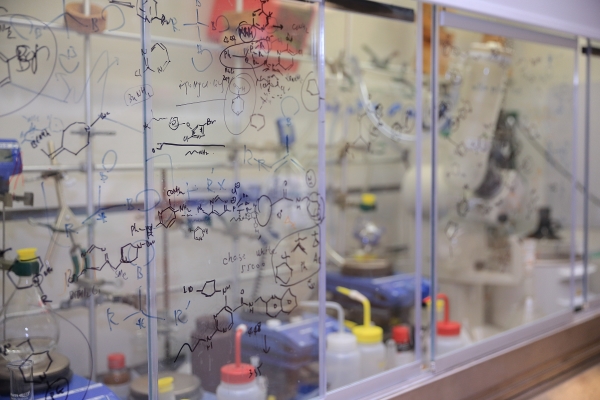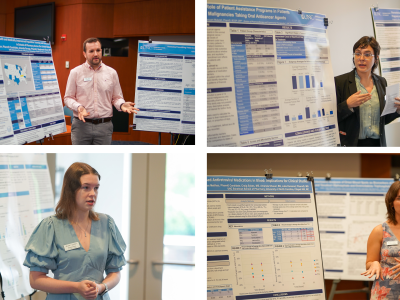April 2, 2020
 A multi-institutional grant including the UNC Eshelman School of Pharmacy is helping discover potential treatments for Alzheimer’s disease (AD) while fulfilling the University’s greater mission to expand its neuroscience research efforts.
A multi-institutional grant including the UNC Eshelman School of Pharmacy is helping discover potential treatments for Alzheimer’s disease (AD) while fulfilling the University’s greater mission to expand its neuroscience research efforts.
In September 2019, the NIH National Institute on Aging announced a collaborative five-year, $37.5 million project between the School and five research institutions. The grant supports the creation of the Open-AD Drug Discovery Center, whose purpose is to develop new chemical probes for therapeutic targets for Alzheimer’s. Emory University is the lead institution for the project.
UNC oversees the Medicinal Chemistry Core (MCC), which designs and synthesizes the chemical compounds to act as high-quality probes to investigate novel targets that, if validated, could lead to new treatments. The MCC is supported with $10.1 million of the NIH funding. Stephen Frye, Ph.D., Director of the Center for Integrative Chemical Biology and Drug Discovery (CICBDD), is leading the UNC effort. Frye said this project is especially groundbreaking as the MCC will be creating new probes for unexplored and under-explored targets in AD. Each target will have supporting genomic and proteomic data implicating it in the AD process, but validating the target pharmacologically requires a small molecule probe, which Open-AD seeks to create. If probes prove effective in AD models, they would form the basis for a drug discovery effort.
Frye said although the ongoing COVID-19 pandemic has delayed lab work, the MCC has made substantial progress that will only continue.
“We’ve already started on one target implicated in Alzheimer’s disease and assays are being developed,” he said. “We will start on synthesis towards probes for this target as soon as we can get back into our labs.”
After the probes are created, the partner institutions validate if they are effective in treating Alzheimer’s. This process can then lay the groundwork for the development of new therapeutics.
UNC has been historically successful with securing NIH grants, but this sort of large, multi-institutional grant is a special achievement for the School and can help grow the University’s wider impact in the neuroscience field.
Another unique aspect of Open-AD is that all research results and tools will be shared in real-time with no intellectual property constraints that would slow uptake by the broader AD biomedical community. Accordingly, any new discoveries would not be patented or held as confidential, but would rather be publicly available through open lab notebooks, meeting presentations and publications.
“Nothing’s going to be confidential,” Frye said. “Everything will be open to the public, other academics, other researchers, industry researchers, and by doing that we hope we can accelerate progress towards new therapies.”
Latest News

Dean Angela Kashuba receives Carolina Alumni Faculty Service Award

RASP poster presentations capture student research


